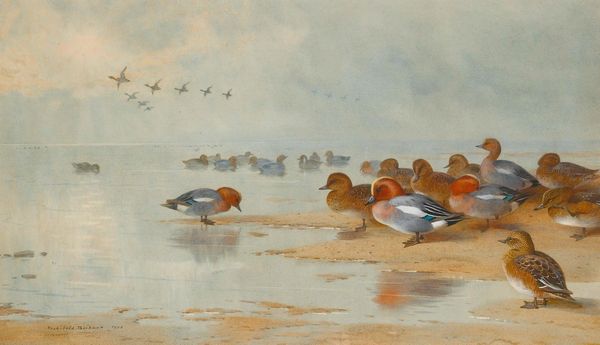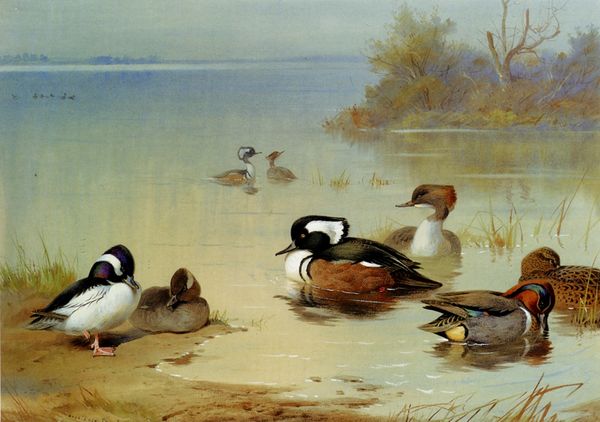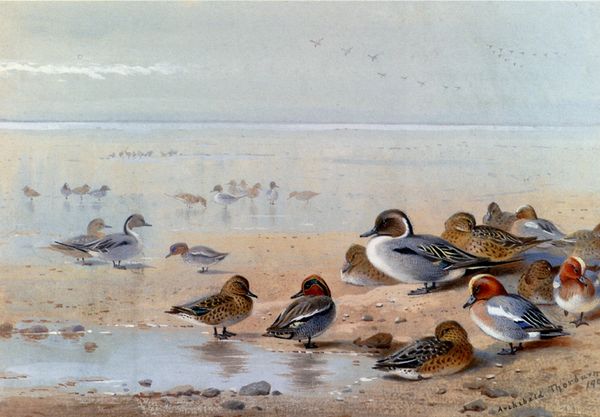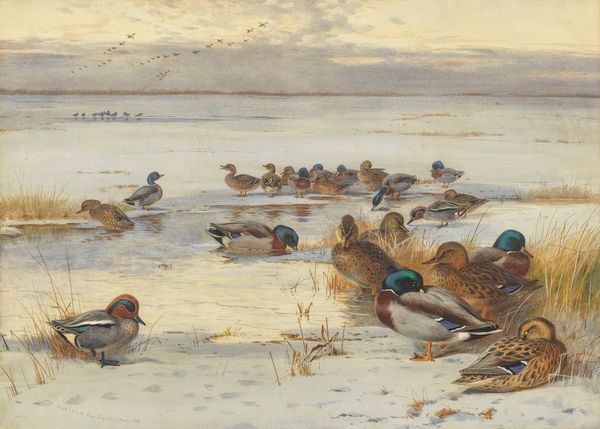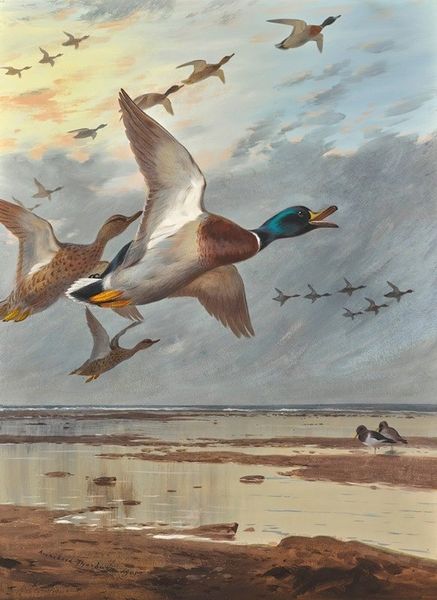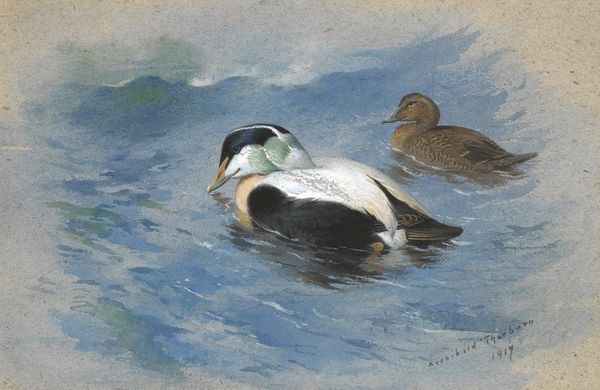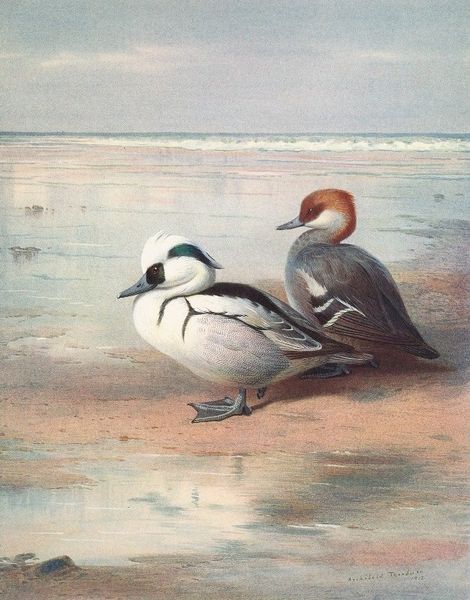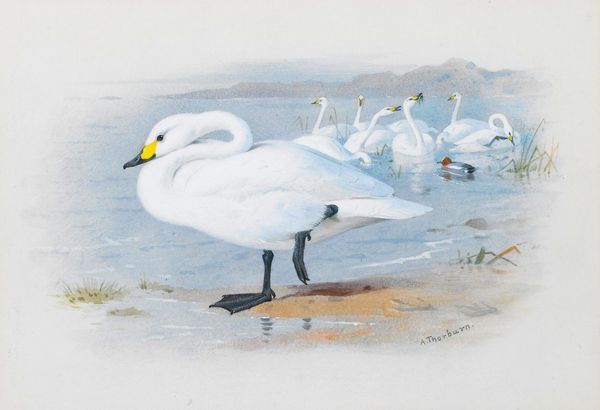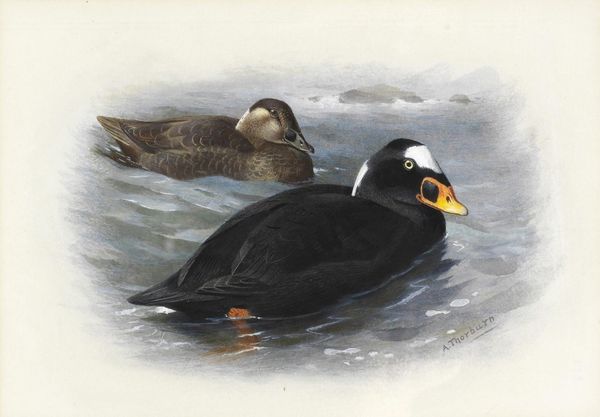
Copyright: Public Domain: Artvee
Editor: Archibald Thorburn's 1921 watercolor, "Ducks Along the Shoreline," gives me a feeling of serene observation. I love the cool tones, and how it captures a fleeting moment in nature. How do you interpret the significance of such a piece, particularly considering its public role? Curator: Considering the period, we have to see this work against a backdrop of increasing industrialization. Images of untouched nature, like this, gain cultural value. It presents a curated, almost idealized view of wildlife. Editor: Idealized how? Are you saying it might not be "real"? Curator: Well, consider what aspects are highlighted and what is left out. We don't see the messy realities of nature here, just a tranquil scene. This kind of romantic depiction really appeals to anxieties surrounding modernization. Do you notice anything in the composition of the piece which signals cultural meaning? Editor: Hmm… maybe the ducks are very orderly organized, especially the group at the very back. Is there any relation between those kind of organization strategies in artwork and, maybe, class structures or society order overall? Curator: Exactly! During this period, bird imagery was not simply about representing wildlife; the style and patronage around such art became signals of education, refined taste, and sometimes, even social class. Artists like Thorburn occupied a specific niche, their work being highly sought after by those who valued the preservation, or the image of the preservation, of traditional British landscapes. Editor: I see. So, it’s not just about the ducks themselves, but what they represent about society at the time and the desire to hold on to the old ways of life. This has been really insightful; I’ll definitely view landscape art with fresh eyes from now on! Curator: Indeed! Examining art in the context of its time is key. We see art as reflecting or even shaping attitudes.
Comments
No comments
Be the first to comment and join the conversation on the ultimate creative platform.
